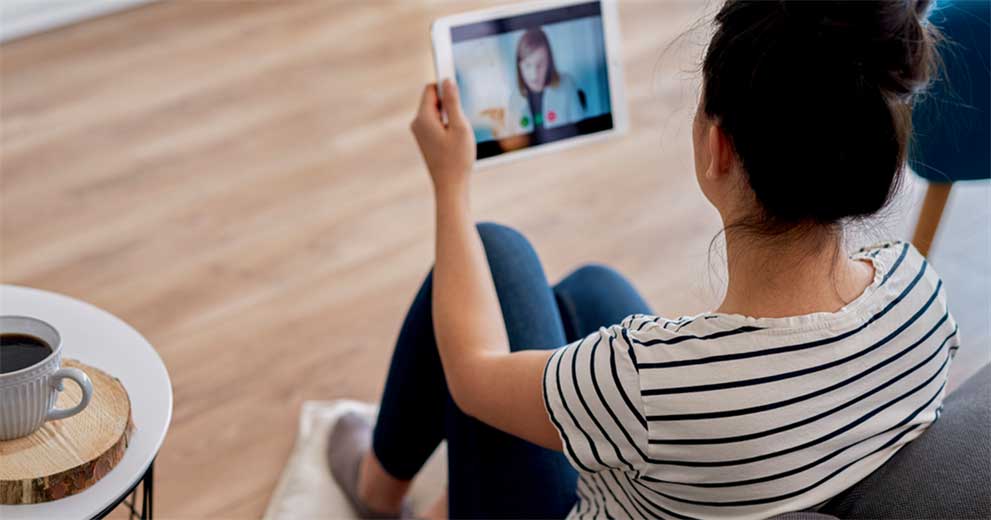This article was authored by Cindy Hartwell, dental benefits analyst at CDA Practice Support, and features an interview with Dr. Nathan Suter, a private dental practice owner and teledentistry consultant.
When the shelter-in-place began in March, I started to research how a dentist could use teledentistry to evaluate the needs of a patient with a dental emergency while practicing social distancing. As part of my research, I watched many webinars on teledentistry and learned how teledentistry could be used beyond evaluating a dental emergency.
I was fascinated by the information a panelist named Nathan Suter, DDS, provided in one of the webinars. Dr. Suter is a private practice owner in Missouri. He has spent the majority of his time during the COVID-19 quarantine as a consultant educating dentists about teledentistry through his company Access Teledentistry, which he formed in 2018.
Suter stated that teledentistry has been used by many dentists for more than a decade to reach the most vulnerable and underserved patients, both rural and urban. He said that he first became aware of the use and potential of teledentistry while in a public health setting but has used it for the past two years within his private practice.
Following the webinar, I reached out to Suter and he graciously agreed to conduct a webinar just for CDA members. On May 4, he presented Teledentistry: The New Normal.
A turning point following years of contacting dental benefit plans
In the May 4 webinar, he explained that for years, prior to COVID-19, he contacted many of the major dental benefit plans to try to discuss insurance coverage for teledentistry but had little success. During his tenure working in the public health setting, many of the dental plans declined requests to fund teledentistry pilot programs for several years.
But a telephone call from a large dental insurance company in early March was a turning point: The plan asked him to be the subject matter expert and help the plan better understand the use of teledentistry during the health crisis.
In the weeks following that initial telephone call, Suter has presented teledentistry webinars for more than 5,000 dental professionals. Most of the presentations’ attendees have been private practitioners wanting to catch up with their public health peers who use teledentistry technology. In all of his presentations, Suter has provided dentists with valuable information about how he uses teledentistry in his private practice.
Using teledentistry to triage patients’ needs
Suter said because of the advocacy efforts of organized dentistry in correlation with many of the major dental benefit plans, many plans are now paying a benefit for virtual limited evaluations and triage. Yet Suter said that isn’t the type of teledentistry he’s been teaching people to use for the past few years, stating it is as limited as the name indicates.
The use of teledentistry to triage a patient’s needs allowed the dentist to reach a patient while the patient is sheltered in place. He said this use of teledentistry not only has proven helpful to his existing patients but has also attracted new patients, as he was the only dentist in his area who provided the service.
As dentists make decisions on how to resume preventive dental care in the new COVID era, Suter offers the following suggestions for how teledentistry can be used to deliver care both in the short and long term.
Limited evaluation and triage
The latest recommendations from the Centers for Disease Control and Prevention include thorough screening of patients before they enter the dental office.
Suter said most dentists he has worked with prefer a videoconferencing teledentistry solution, which is called synchronous or real-time interaction with the patient. That type of interaction, he said, is very helpful when establishing relationships with new patients, in particular.
However, he believes the most reliable and productive use of teledentistry is the ability to do an evaluation asynchronously, commonly referred to as store-and-forward. Currently, Suter has patients book video-chat appointments. The patients complete a detailed digital form prior to their visit. Often, the form contains enough information to allow Suter to directly message the patient and provide guidance without always requiring the scheduled video chat.
He said that regardless of the methodology used to perform teledentistry, it can help lessen the risk for COVID-19 exposure and save PPE resources.
Satellite location or weekend hours
Some of the offices Suter has worked with use teledentistry to supervise dental hygiene at a satellite location or for weekend hours. Incorporating teledentistry services with the hygiene team can add value to staff members because it allows them to work at the top of their license and, therefore, allows dentists the time to do the same.
Teledentistry has been tried and tested with great results as another way to extend the dental practice outside of the four walls.
CDA Practice Support is here to address your dental benefit questions and offer individual member assistance. You may submit your questions online using the dental benefit submission form accessible through your cda.org account. Once received, Practice Support will analyze the issue, evaluate it for possible resolution and communicate clear next steps.
To submit your dental benefits question, visit My Account at cda.org, click the link for Dental Benefits Issue Submission and follow the prompts.

